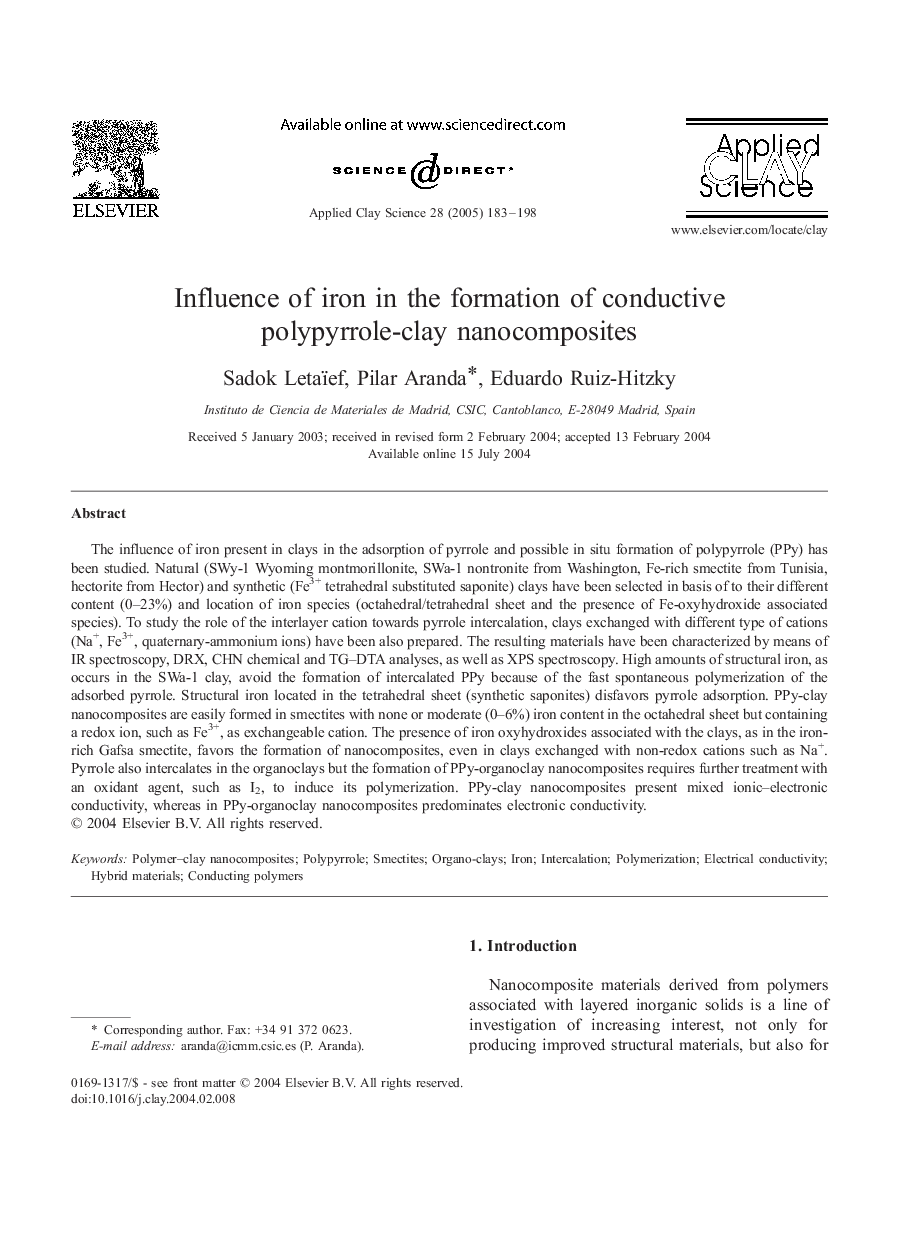| Article ID | Journal | Published Year | Pages | File Type |
|---|---|---|---|---|
| 9822548 | Applied Clay Science | 2005 | 16 Pages |
Abstract
The influence of iron present in clays in the adsorption of pyrrole and possible in situ formation of polypyrrole (PPy) has been studied. Natural (SWy-1 Wyoming montmorillonite, SWa-1 nontronite from Washington, Fe-rich smectite from Tunisia, hectorite from Hector) and synthetic (Fe3+ tetrahedral substituted saponite) clays have been selected in basis of to their different content (0-23%) and location of iron species (octahedral/tetrahedral sheet and the presence of Fe-oxyhydroxide associated species). To study the role of the interlayer cation towards pyrrole intercalation, clays exchanged with different type of cations (Na+, Fe3+, quaternary-ammonium ions) have been also prepared. The resulting materials have been characterized by means of IR spectroscopy, DRX, CHN chemical and TG-DTA analyses, as well as XPS spectroscopy. High amounts of structural iron, as occurs in the SWa-1 clay, avoid the formation of intercalated PPy because of the fast spontaneous polymerization of the adsorbed pyrrole. Structural iron located in the tetrahedral sheet (synthetic saponites) disfavors pyrrole adsorption. PPy-clay nanocomposites are easily formed in smectites with none or moderate (0-6%) iron content in the octahedral sheet but containing a redox ion, such as Fe3+, as exchangeable cation. The presence of iron oxyhydroxides associated with the clays, as in the iron-rich Gafsa smectite, favors the formation of nanocomposites, even in clays exchanged with non-redox cations such as Na+. Pyrrole also intercalates in the organoclays but the formation of PPy-organoclay nanocomposites requires further treatment with an oxidant agent, such as I2, to induce its polymerization. PPy-clay nanocomposites present mixed ionic-electronic conductivity, whereas in PPy-organoclay nanocomposites predominates electronic conductivity.
Keywords
Related Topics
Physical Sciences and Engineering
Earth and Planetary Sciences
Geochemistry and Petrology
Authors
Sadok Letaïef, Pilar Aranda, Eduardo Ruiz-Hitzky,
